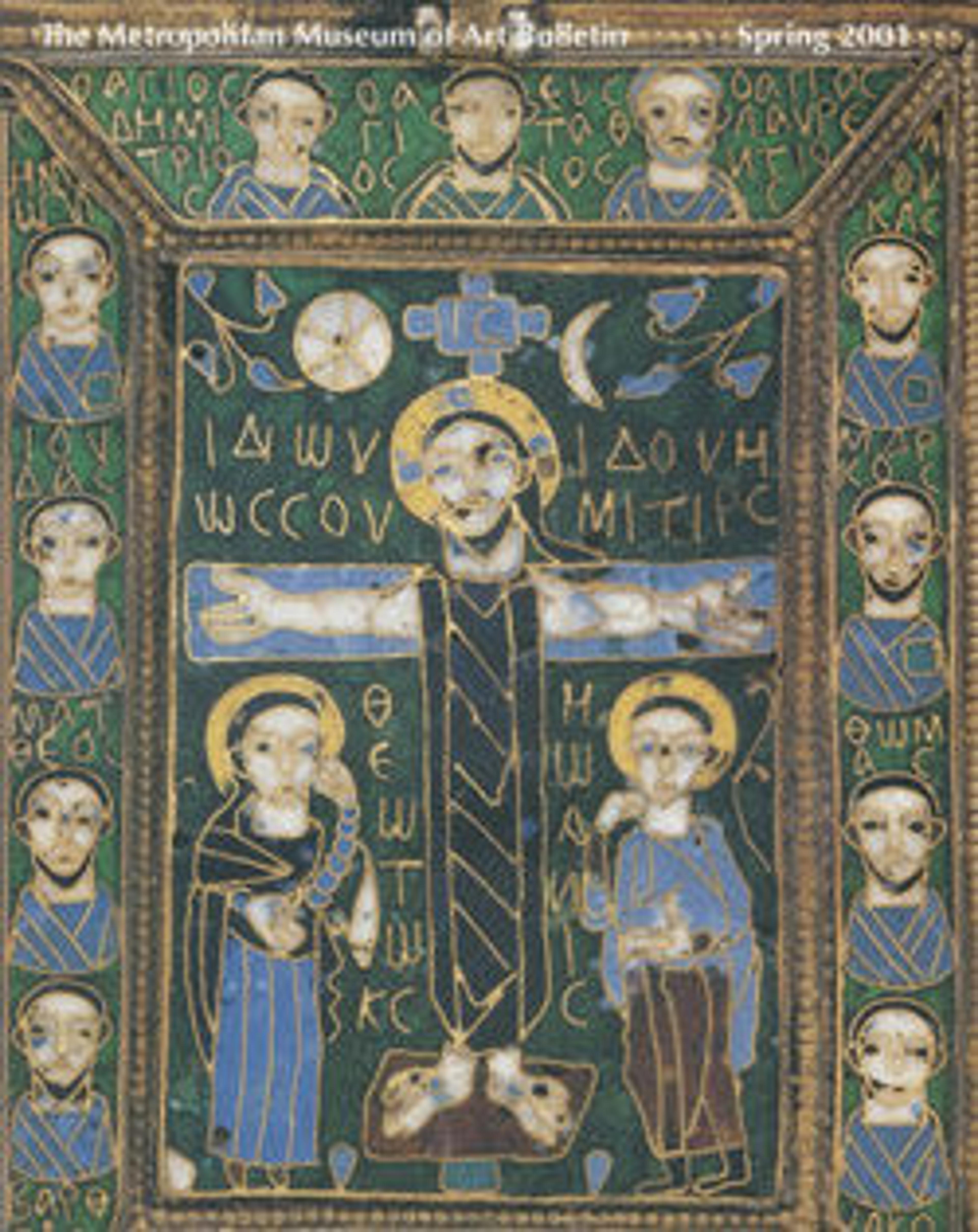Tabula (Square) with the Head of Spring
This small tapestry panel comes from Egypt. It was originally used as an appliqué on a larger textile, probably as part of a set. Egypt had a major weaving (especially linen) industry throughout the ancient and medieval period, which brought the country a great deal of its trade and wealth. Unlike the textiles of other cultures, many of these pieces have been preserved by Egypt's hot, dry climate, which prevents rotting.
Personifications of the seasons were thought to represent prosperity. The pink blossoms suggest that this figure is Spring.
Personifications of the seasons were thought to represent prosperity. The pink blossoms suggest that this figure is Spring.
Artwork Details
- Title: Tabula (Square) with the Head of Spring
- Date: 5th–7th century
- Geography: Attributed to Egypt, Akhmim (former Panopolis)
- Medium: Linen, wool
- Dimensions: Textile: H. 9 1/4 in. (23.5 cm)
W. 9 13/16 in. (25 cm)
Mount: H. 15 5/8 in. (39.7 cm)
W. 15 5/8 in. (39.7 cm)
D. 1 3/8 in. (3.5 cm) - Classification: Textiles
- Credit Line: Gift of George F. Baker, 1890
- Object Number: 90.5.848
- Curatorial Department: Islamic Art
More Artwork
Research Resources
The Met provides unparalleled resources for research and welcomes an international community of students and scholars. The Met's Open Access API is where creators and researchers can connect to the The Met collection. Open Access data and public domain images are available for unrestricted commercial and noncommercial use without permission or fee.
To request images under copyright and other restrictions, please use this Image Request form.
Feedback
We continue to research and examine historical and cultural context for objects in The Met collection. If you have comments or questions about this object record, please complete and submit this form. The Museum looks forward to receiving your comments.
